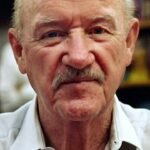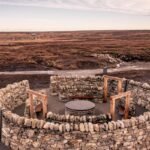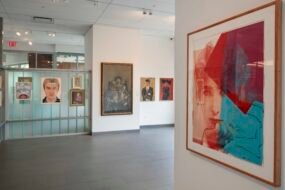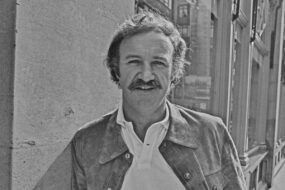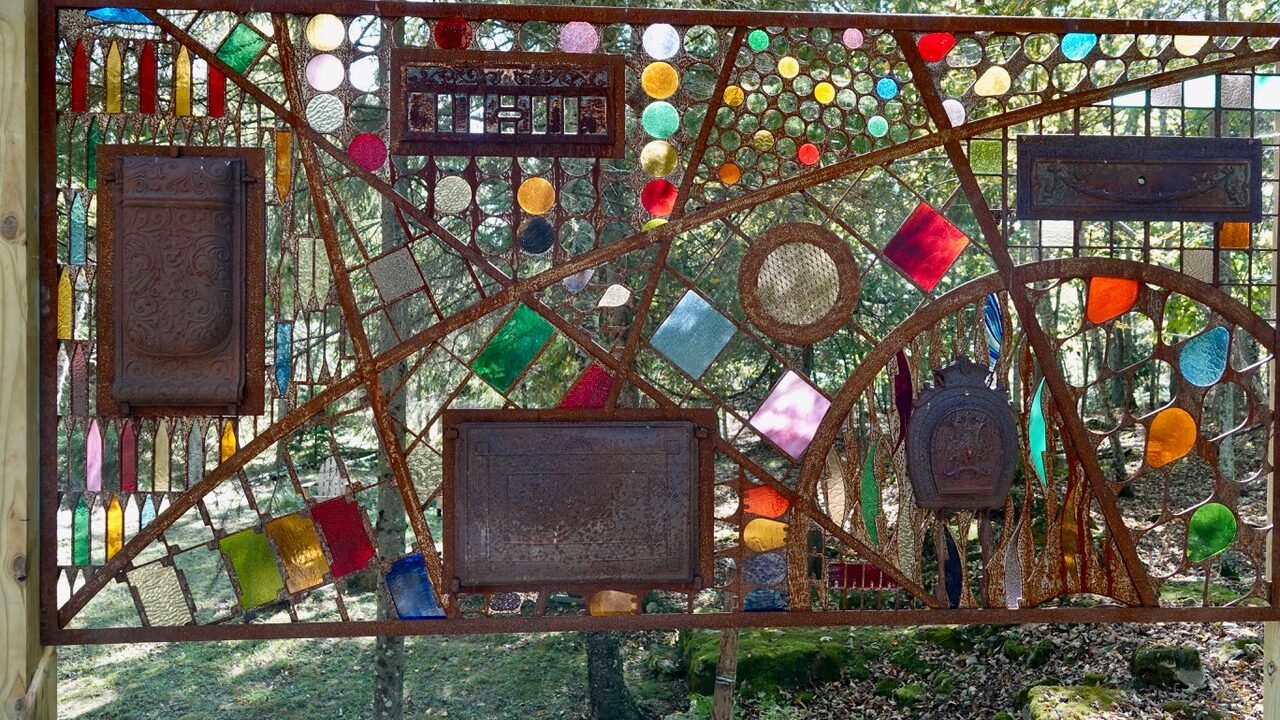

“Old Stove Parts” by Rusty Wolfe. Photo by Tom Groenfeldt.
Christopher Nelson’s foray into art collecting began with a miss.
As a student at St. John’s College in Santa Fe, New Mexico, he used to visit Nedra Matteucci Galleries every couple of weeks, looking at the expensive Native American art on display. On one trip, a simple soapstone carving by artist Doug Hyde caught his eye.
“I went back and looked at it three or four times, and the last time, the artist was there,” Nelson said. “He asked me what I liked and I told him the primitive simplicity was remarkably well-executed in this piece. He asked if I had thought about buying it, but it was $60 and I didn’t have any money.”
So the artist suggested paying $5 a month, an offer Nelson declined. He now considers that choice a “stupid decision” because Hyde would later become a world-famous sculptor, working mostly with exotic stones.

But Nelson soon found another artist whose style was similar to Hyde’s – an Inuit sculptor, displayed at a Quebec City gallery.
“That was the beginning of my interest in art – in primitive and international art from Southeast Asia, Peru, and African birds and African masks, all things that, back in the ‘70s, did not cost very much,” Nelson said. “I was raising four children and getting into my law practice so I certainly couldn’t think of anything more expensive.”
Nelson served on the board of governors at St. John’s College and was later asked to become president, which sometimes meant dividing time between Annapolis, Maryland and Santa Fe campuses.
Throughout his 26 years as president, he taught at least one course or seminar per year in classic literature, philosophy, theology, history or political philosophy. During this time, Nelson and his wife, Joyce, lived in a spacious home designed for the frequent entertaining expected from a college president. The home was also big enough to house a large art collection.


“It was impossible to fit all the art we had hung in the president’s house in the home we purchased upon my retirement, but we did look for, and found, a very good fit in a home that could show much of it,” he said.
This fall, Nelson spent time on Washington Island, enjoying the fall colors for the first time since he and his wife bought a small log cabin there in 1989. On its walls hang art by Craig Blietz, Marc Anderson and Ginnie Cappaert, among other artists, mostly from Door County. Work by Door County artists is also displayed at his home in Annapolis.


Photos by Tom Groenfeldt.
Nelson’s taste in art ranges widely. He doesn’t focus on one single genre, but he avoids overtly political art and has only a few photographs and watercolors (though that’s due to lack of wall space, not lack of interest).
“I collect what I like to look at,” he said. “If anything, I’m looking for art that I find restful or thought-provoking for the indoor collection.”
Fortunately, Nelson and his wife had largely similar tastes in art.
“We found, increasingly over the years, that we either agreed on which artists or works we want around us, or we appreciated the other’s tastes sufficiently that we grew to love what the other loved,” he said. “The garden, the art, and our tastes in reading were shared passions.”
Once their walls were mostly filled, the pair started collecting sculptures they could exhibit outside. Their backyard served as a way to expand the art collection without expanding the house. A contractor moved heavy rock behind the house to make way for a garden path that winds for a mile around 50-plus sculptures by William Jauquet, Rusty Wolf, David Valentine, Nathan Hatch, Rebecca Carlton, Tony Staroska and others.


Though his home is already filled with art, Nelson can still find wall space for a painting he loves. During an opening reception at Edgewood Orchard Galleries, he asked owner JR Jarosh to set a Ginnie Cappaert painting aside for him. He considers Edgewood the finest art gallery in the country.
Nelson’s wife died last February after nine years of cancer treatment. Although they had been spending more time on the island since 2017, their main residence since 1991 had been Annapolis. Nelson wondered how life on the island would be without his companion.
“I was worried when she died that it might be hard to come back here on my own,” he said. “But I have found that I love too many things about the island and Door County to stay away. I have only happy memories of our time here together, and those have replaced the grief.”


